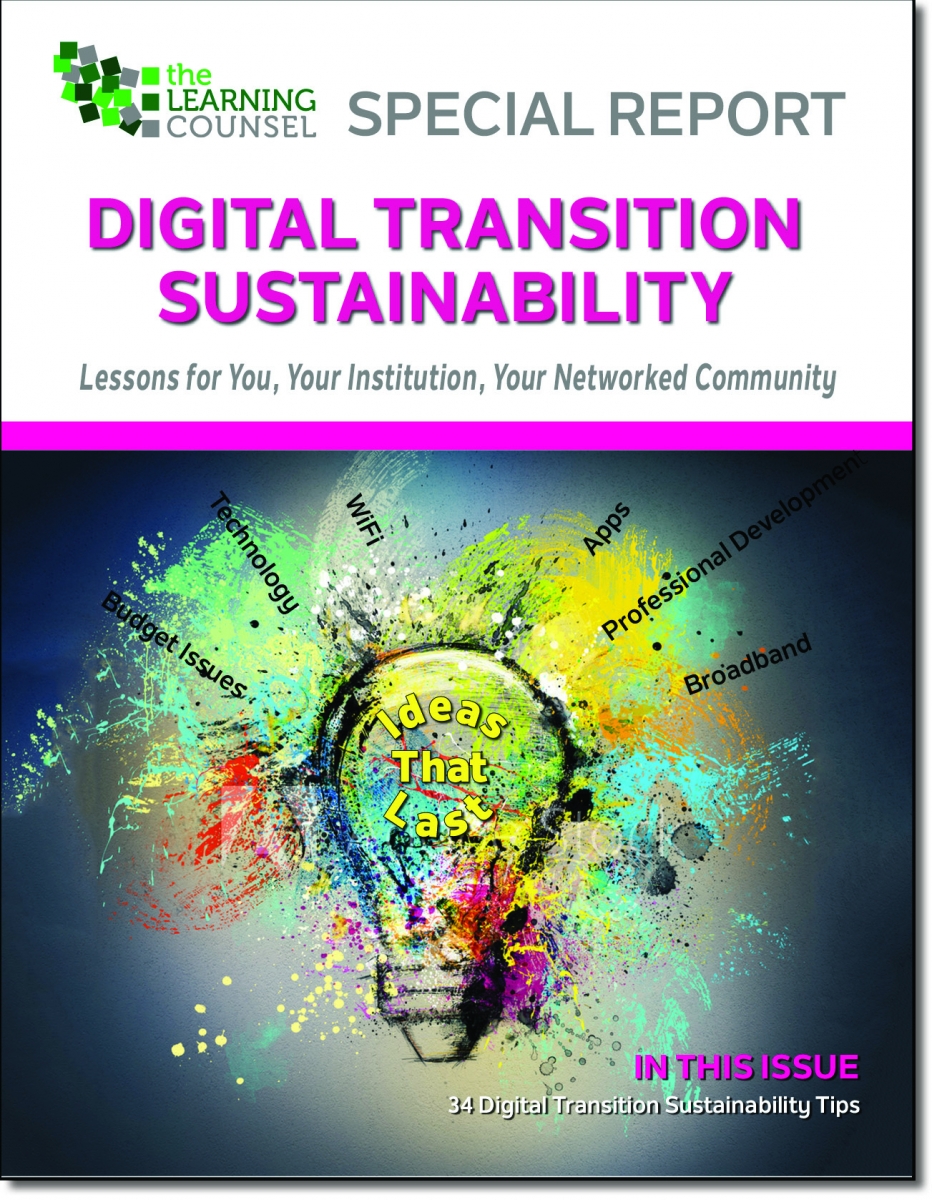Re-aligning a district for tech is a complex undertaking, with many challenges. When Lawrence Public Schools in Kansas set out along this path they, like so many other districts, faced equity as a primary hurdle so no student would be left behind.
As a district, Lawrence is neither suburban nor rural, says Jerri Kemble, assistant superintendent of Innovation & Technology. The 12,000-student system began its journey with personalized learning in 2013 with a pilot project using a combination of school devices and bring-your-own-devices in seven classrooms, in a mix of grades. What quickly became apparent, especially at the high school level, was that students needed to access digital content after school and on weekends.
"I had heard Dr. Darryl Adams, the former superintendent from California's Coachella Valley talk about how important it was to connect students after-school hours to Wi-Fi and that just really clicked," Kemble recalls. "I thought, I wonder what it is like for our students. At the time, we weren’t investigating that much."
When she began asking about access, the individual situations pleaded for a thoughtful response. In truth, what she found was a snapshot of the national digital equity/access challenge.
One student told her, "We have internet at home and we do have a computer, but it’s my dad’s computer. There are five kids in the family, and one of my sisters goes to virtual school, and so I never have any time to get on it. If you ask me, yeah, we do [have a computer and internet], but I have no access to it."
Another student works on homework on her phone. But when her data package runs out, she stops doing homework. She keeps that to herself because she's too embarrassed to tell her teacher that her family can’t pay for more data; “I’d rather just take the F or the zero than let people know that."
A third student told Kemble, "I would love to participate in some after-school activities. I’d like to be part of theatre and maybe some sports. But I can’t because when school ends I have to chase Wi-Fi all over town to get connected so that I can get my homework done."
Hearing those stories helped Kemble to realize just how deep-rooted the issue was. Following a carefully conducted survey to see how many students needed help with access, they found the number was 400.
Armed with that information, the school system made presentations to the city and county commissioners, urging them to come up with a county-wide plan for access. The school system also reached out to its own foundation to explain how important digital access is for both the student and the student's family. "A lot of our communication, our grades, information about the school, everything is found online," said Kemble. "So, if we could solve providing kids with access to the internet, it opens up that world of communication for the family also. As a by-product, if a family member is able to get online to look for a job—think how many jobs are only listed online—then that’s an added bonus."
With support from the local community and the Lawrence School Foundation they were able to purchase 400 hotspots for an immediate solution.
And this year, they are taking it a step further, to implement a full 1-to-1 program, to place devices in the hands of every high school student, ensured that their access equity moves, cover any homework gap.
Article exerpted from the newest Digital Transition Sustainability Special Report.
Download today.











